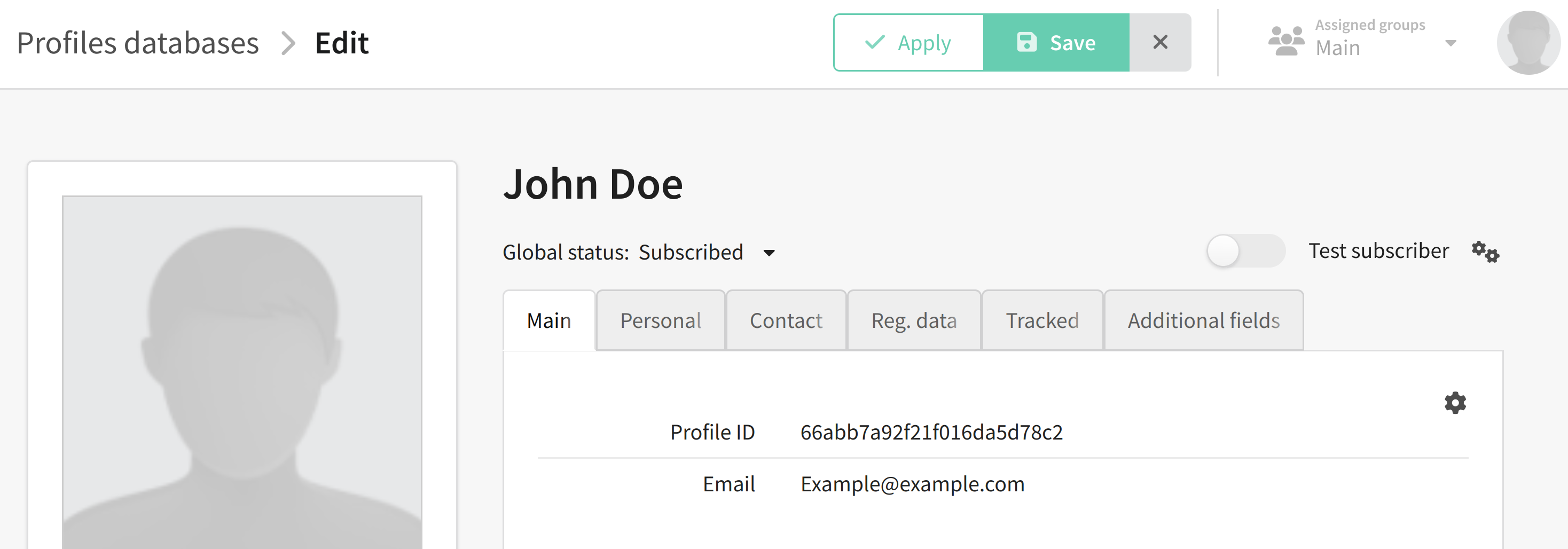Engage profile in scenario
In this article we will explain how to use an API request to send to the script a profile that already exists in the database.
In order to run a profile in a scenario, the scenario must be created and activated. In this article you can read about how to work with automation scripts.
Note that the profiles in this run are included in the script via the Default **node.
Getting an API token
API token is a key to access the platform via API. It is used in any API request.
You can find the token in Altcraft platform settings, in the "Tokens" section. If you don't have a token yet, create one by clicking on the corresponding button:

Only master users can create an API token. If you do not have rights to create a token, contact a user with master rights.
Installing and running Postman
To work with API requests, you need an application that allows you to send and receive them.
1. Download and install the Postman application or open its web version.
2. Select the POST method for your request.
3. Click the Body tab and select raw mode. Make sure the JSON format is selected.

Request URL

To send a request to the server you need to enter its URL. It is individual for each request. For example, for a profile import request, the URL would be:
https://example.com/api/v1.1/workflows/start/.
Instead of example.com you need to specify the address where the platform is located. You can get it directly from the address bar:

Creating a request
Let's move on to writing the query. Suppose we want to send a subscriber with ID 66acb337240d5213037986d8 to scenario #3. The query might look like this:
{
"token": "abcdefghklmnopqrstzxc",
"id": 3,
"matching": "profile_id",
"profile_id": "66acb337240d5213037986d8"
}
- "token" — API token. More details about where you can find it are provided at the beginning of the article.
- "id" — scenario number. It is listed with the # sign next to the scenario name. The
idof a scenario is always a number, do not confuse it with the name. - "matching" and "profile_id" - parameters by which the query will find the required profile in the database. In this case the search by profile ID is used.
The profile ID can be found here:

More details about the matching parameter
The matching parameter defines by which field the profile will be searched in the database. Several search modes are available in the platform, for example, the platform can search for a profile by email address, phone number, system ID or by any value you store in an additional field in the database.
The main thing is that the field by which you launch a search in the database is unique for the profile, i.e. the value of this field should not be the same for different profiles in the same database.
If you want to find a profile by its email, then matching will look like this:
{
"matching": "email",
"email": "example@example.com"
}
Search for a profile by phone:
{
"matching": "phone",
"phone": "+79000000000"
}
Search for a profile by ID (only when updating a profile):
{
"matching": "profile_id",
"profile_id": "012452gf62fcd71fjh8ec0"
}
If you use an additional field to search for a profile in the database, your query will look like this:
{
"matching": "custom",
"field_name": "CRM_ID",
"field_value": "12345"
}
where CRM_ID is the name of the field, and 12345 is the value of this field for the profile.
Pay attention to the syntax of your request. Any extra character, be it a parenthesis, comma or period, can lead to errors when sending a request. Likewise, the query will not work if you do not close any quotes or parentheses.
Sending a request
To send a request, click Send. If the request is successful, the following message will appear:

If something went wrong, the response message will indicate the number and description of the error:

If you are unable to resolve the error yourself, please forward the error number and description to Altcraft Support team.
This article describes only some of the possible parameters for this request. The remaining parameters can be found here.